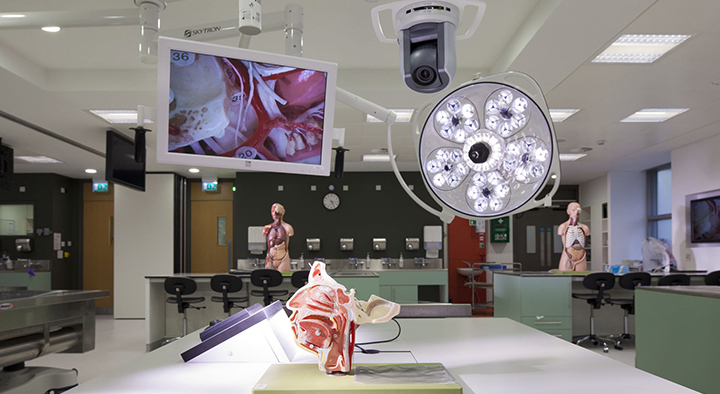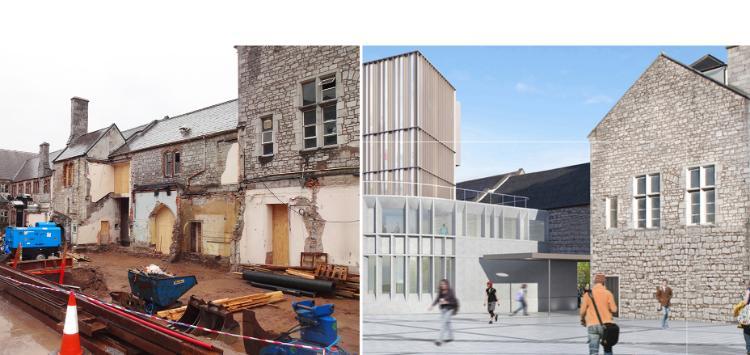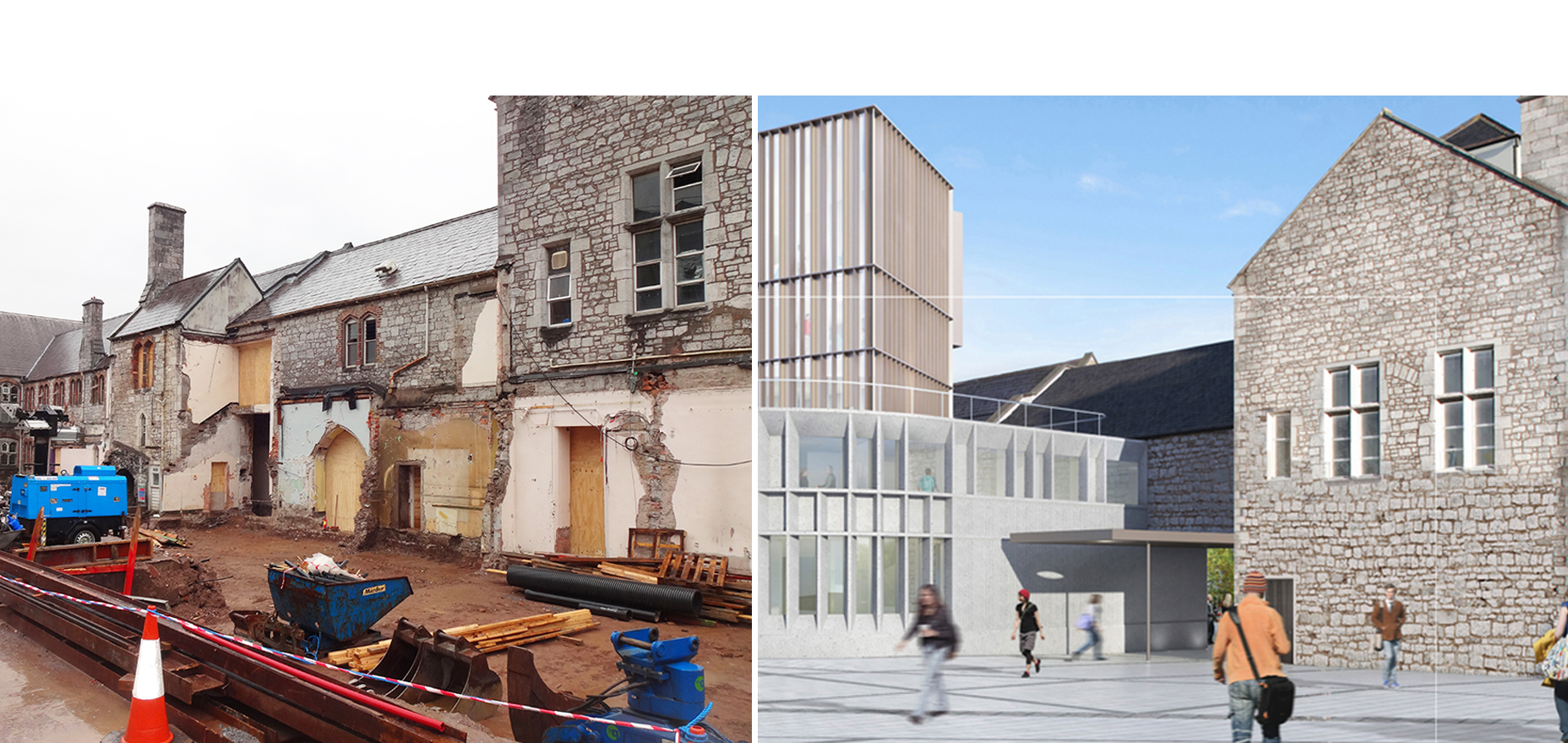Heads of Department and Professors of Anatomy 1849-2021
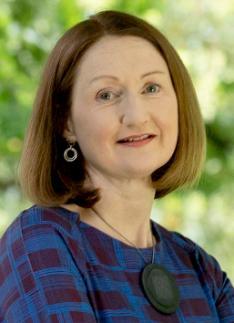
Professor Aideen Sullivan BSc PhD (Cantab) PG Cert T&L H Ed
Head of the Department of Anatomy and Neuroscience University College Cork 2021-
Professor Aideen Sullivan, graduated from University College Dublin in 1992 with a BSc in Pharmacology. In 1995, she obtained a PhD in Neuropharmacology from the University of Cambridge, UK, then worked in Imperial College London School of Medicine as a post-doctoral researcher from 1995-1998 on a project funded by the Parkinson's Disease Society. In 1998, she was appointed as Lecturer in the Department of Anatomy at UCC, and was promoted to Senior Lecturer in 2006 and to Professor (Scale 2) in 2014. Professor Aideen Sullivan was appointed Head of the Department of Anatomy and Neuroscience at University College Cork in March 2021.
IRIS Profile: Professor Aideen Sullivan
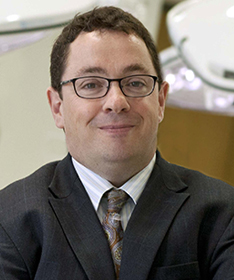
Professor John F. Cryan, BSc (Hons), PhD
Professor of Anatomy and Neuroscience University College Cork 2011-
John F. Cryan is Professor & Chair, Department of Anatomy & Neuroscience, University College Cork and serves on the University’s Governing Body. He is also a Principal Investigator in the APC Microbiome Institute. He received a B.Sc. (Hons) and PhD from the National University of Ireland, Galway, Ireland. He was a visiting fellow at the Department of Psychiatry, University of Melbourne, Australia, which was followed by postdoctoral fellowships at the University of Pennsylvania, Philadelphia, USA and The Scripps Research Institute, La Jolla, California. He spent four years at the Novartis Institutes for Biomedical Research in Basel Switzerland, as a Lab Head, Behavioural Pharmacology prior to joining UCC in 2005.
IRIS Profile:Professor John F. Cryan
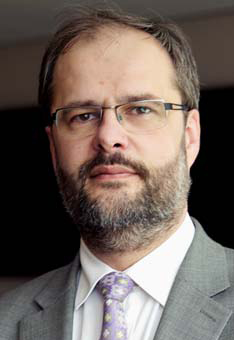
Professor Richard Greene, BSc, PhD, MB, BS, MBA, FHEA
Professor of Anatomy University College Cork 2008-2009
Richard Greene graduated from Charing Cross & Westminster Medical School, London as a doctor (with distinction in Clinical Pharmacology & Therapeutics) in 1991. He had previously obtained BSc (First Class) and PhD degrees from the same institution in 1986 and 1989 respectively.
After junior hospital posts in medicine, surgery and psychiatry, he moved to the University of Oxford firstly as a Wellcome Trust Mental Health Research Training Fellow and then as Medical Research Council Career Development Fellow.
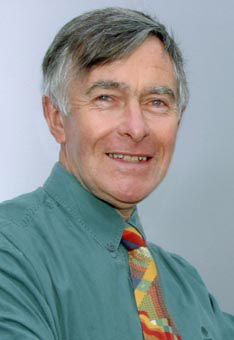
Professor John P. Fraher, MB, BSc, PhD, FRCSEdin, DSc, MSIAI(hon), FAS(Hon), FRSB, MRIA
Professor of Anatomy University College Cork 1977-2007
John Fraher is Emeritus Professor of Anatomy at University College, Cork. He was the foundation Director of UCC's BioSciences Institute. He took a degree in Medicine from UCC, and was Lecturer and then Senior Lecturer in Anatomy at Edinburgh and London Universities, respectively, before taking the Chair at UCC. He is a former Swedish Medical Research Council Fellow and has been visiting professor at the Universities of Arkansas (Wellcome Chair) and Uppsala. He holds a DSc from Edinburgh University, and a Fellowship of the Royal College of Surgeons of Edinburgh. He is a Member of the Royal Irish Academy.
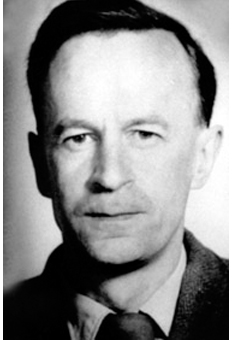
Professor Gerard N. C. Crawford, MA, DM
Professor of Anatomy University College Cork 1973-1977
Gerald Crawford graduated from London University. He worked for a time as a Pathologist in the Royal Army Medical Corps (RAMC). He was a Lecturer in anatomy at Oxford, and a Fellow of Magdalen College. in 1973 he was appointed to the Chair of Anatomy at University College, Cork. His research interests were mainly concerned with the development and growth of muscle.
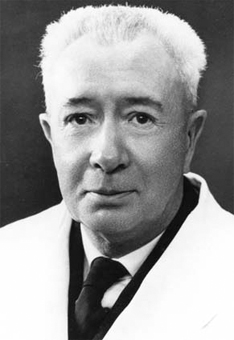
Professor Michael MacConaill, MA, MD, DSc, MRIA, FLS
Professor of Anatomy University College Cork 1942-1973
Michael Aloysius MacConaill was born on 27 July 1902 in Ballymena, Co. Antrim and was educated at St Mary's School in Belfast. In 1919 he entered Queen's University Belfast Medical School, and completing a B.Sc. in the Anatomy Honours School in 1922. In 1929 he obtained an M.Sc from Queen's University Belfast, and became a demonstrator in Anatomy there. He was awarded the Queen's University Travelling Medical Studentship for 1929-30, which took him to University College, London. He was a lecturer in Anatomy in the Anatomy Department at Sheffield University, and In 1942 he was appointed to the Chair of Anatomy at University College, Cork.
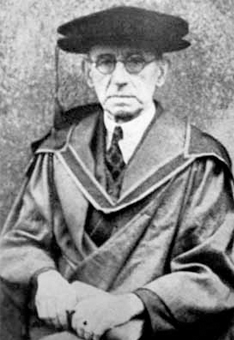
Professor Denis P. Fitzgerald, BA, MB, BCh, BAO
Professor of Anatomy University College Cork 1909-1942
Denis Patrick Fitzgerald was born in Cork in 1871. He was educated in Cork and obtained degree of BA RUI in 1890 and entered Queen’s College Cork in 1891 as a medical student, here he secured scholarships exhibitions and prizes and qualified MB BCh BAO in 1896. The following year 1897 he became Demonstrator in Anatomy (continuing in this post for ten years) and also House Surgeon to the Cork Eye Ear and Throat Hospital (for two years). In 1907 Professor Windle, the then Professor of Anatomy, appointed Dr Fitzgerald his deputy, making him Lecturer in the Anatomy Department.
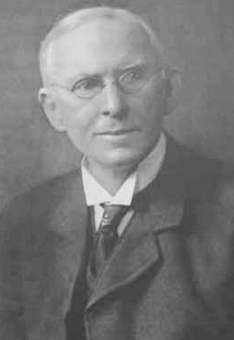
Professor Bertram C. A. Windle, BA, MB, MCh, MA, MD, PhD, LLD, DSc, FRS
Professor of Anatomy Queen's College Cork 1907-1909
Bertrand Windle w as the son of Rev. S.A Windle, BD (Vicar of Market Rasen, Linconshire) and Katherine Sydney, daughter of Admiral Sir Josiah Coghill, Bart., of Co Cork. He was born in 1858 at Mayfield Vicarage. He was educated in Dublin and Repton, Derbyshire and attended Trinity College Dublin where he graduated BA (1879) and MB MCh (1881). Later he obtained the degrees of MA, MD, PhD, LLD, and DSc and became a Fellow of the Royal Society. After graduation Windle lectured Botany at Queen’s College Dublin, and demonstrated Anatomy at the Royal College of Surgeons in Ireland. more+

Professor John J. Charles, MD, MA, LRCSEd, DSc
Professor of Anatomy and Physiology Queen's College Cork 1875-1907
John J Charles was born in Tyrone in 1845, son of David Charles MD Glasgow. Charles studied at Queen’s College Belfast, graduated MD (1865) MA (1868) LRCSEd (1871) DSc (1882). He studied in Glasgow, London, Edinburgh, Paris, Bonn and Berlin. He lectured on Anatomy in Edinburgh and Belfast and was appointed to the Chair at Queen’s College Cork in 1875. He endowed the College with a fund to provide a Gold Medal to be awarded alternately in Anatomy and Physiology, and since called the , which is still awarded by the University. John J. Charles died in 1912.
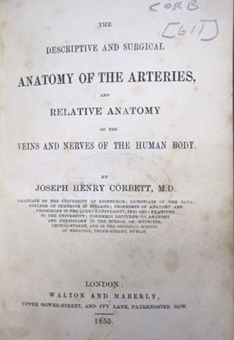
Professor Joseph H. Corbett, MDEd, LRCSI, MD
Professor of Anatomy and Physiology Queen's College Cork 1855-1875
Joseph Henry Corbett was born 1836 and qualified MDEd (1835), LRCSI (1836) and MD Queens University Ireland (1856). He was Lecturer in Anatomy and Physiology at the School of Medicine, Cecilia Street, Dublin, and was Professor of Anatomy and Physiology to the Apothecaries’ Hall of Ireland, where he was considered an elegant and impressive lecturer. Henry Corbett was appointed Professor of Anatomy and Physiology in 1845 to Queen's College Cork.
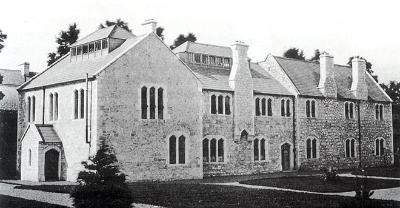
Professor Benjamin Alcock, BA, MB, LRCS,I MRCSI
Professor of Anatomy and Physiology Queen's College Cork 1849-1855
Benjamin Alcock the first Professor of Anatomy and Physiology at Queen's College Cork, was a prominent anatomist who first definitively described the eponymous pudendal (Alcock's) canal. Benjamin Alcock was born in Kilkenny in 1801 and was educated in Dublin studying Anatomy in Trinity College. more+
Heads of Department and Professors of Anatomy 1849-2021
To date there have been ten Professors of Anatomy in University College Cork, dating from 1849 when Benjamin Alcock was appointed first Professor of Anatomy and Physiology in Queen's College Cork. Initially the departments of Anatomy and Physiology were one. In 1907 under the Presidency of Bertram Windle the departments were split into separate departments Department of Anatomy and Department of Physiology. Recently under the direction of Professor John F. Cryan the Department of Anatomy has been renamed the Department of Anatomy and Neuroscience.
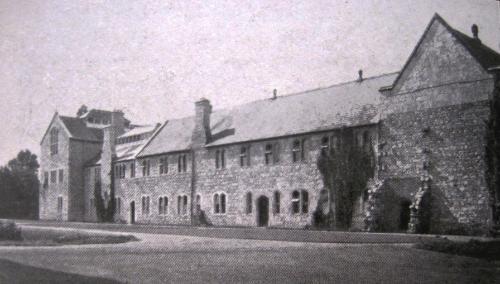
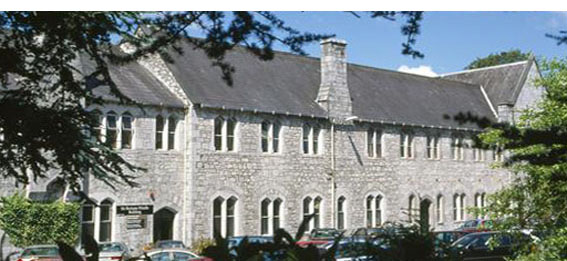

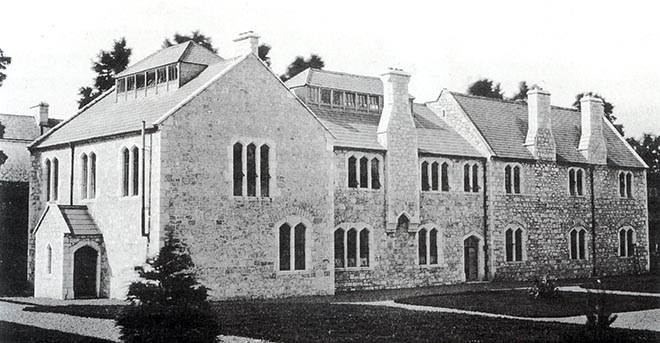

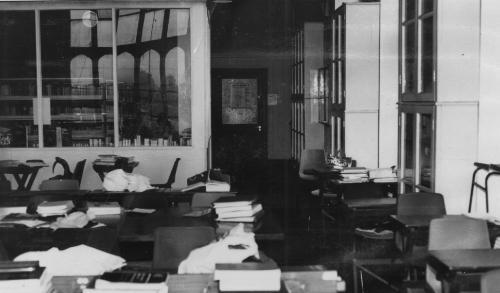
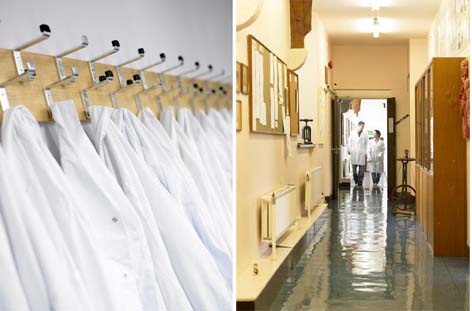
.jpg)
.jpg)
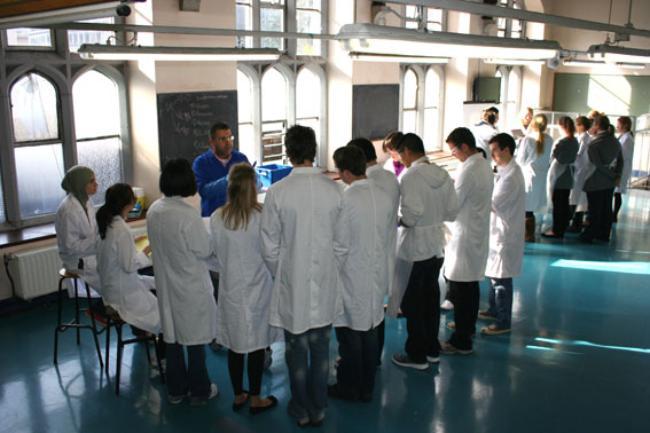
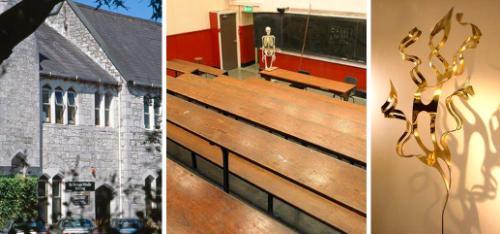
-720x362.jpg)
